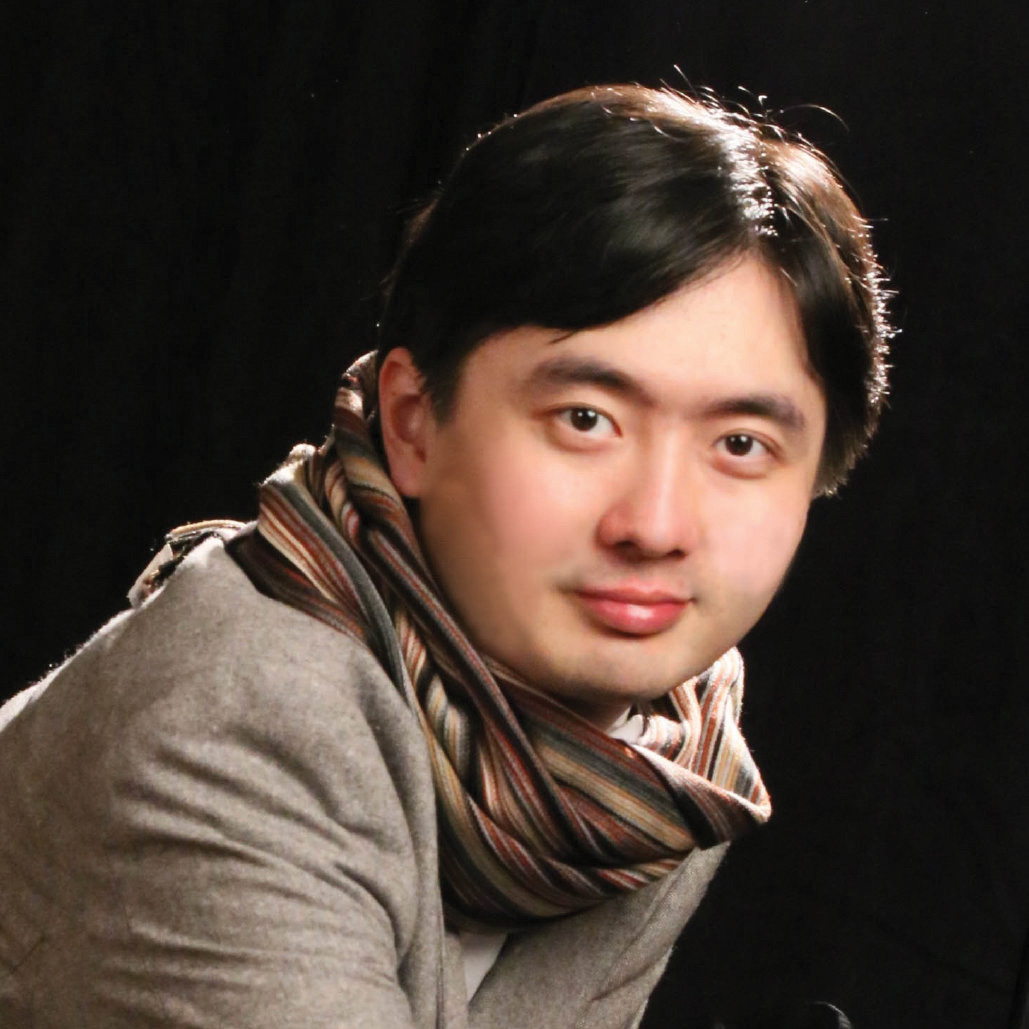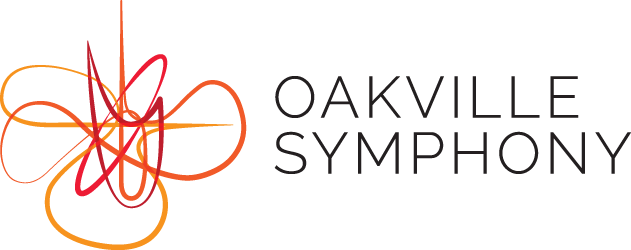Guest Artist:
Sheng Cai, Piano, in memory of Peter Longworth
November 3–4, 2018
Oakville Performing Arts Centre
Program Notes
Johannes Brahms (1833-1897): Piano concerto in B flat major, No. 2, Op. 83
I: Allegro non troppo II: Allegro appassionato III: Andante IV: Allegretto grazioso
Brahms’s first piano concerto did not become popular for some time, and Brahms attempted another one only after 20 years had elapsed, by which time he had become well established through the impact of his early symphonies. What emerged was one of the largest concertos ever written up to then. It includes four movements rather than the conventional three, and it is structurally so extensive that it is almost a “symphony” for piano and orchestra. The solo part is technically challenging, but the soloist must remain involved in the orchestral ensemble.
The long first movement is founded on an opening horn call to the other instruments. The piano awakens with slow arpeggios, and the woodwinds respond, followed by an early solo cadenza. Only then does the main body of the movement progress. There is an extensive development, with repeated references to the horn call, which is finally reiterated as a closing fanfare, with accompanying octave trills for the piano.
The second movement is a scherzo, a rare addition for a concerto. It may have been written for Brahms’s violin concerto and then discarded. In keeping with the rest of the piece, the movement is again “symphonic” in scope and passion.
The third movement andante begins with an expressive cello solo – a melody which is taken up by the violins, and then by the piano. Later there is a brief dialogue between the soloist and clarinets. In the coda, the cello restates its theme, accompanied by trills and arpeggios in the piano.
The finale movement is a rondo, once again on grand scale. Its bright opening theme recurs repeatedly, and eventually it rounds off the piece as well. The solo part is brilliant, especially at the final return of the rondo refrain in a faster tempo. The work concludes with yet more piano arpeggios and a big crescendo in the full orchestra.
Petr Ilych Tchaikovsky (1840-93): Nutcracker – Act II
Scene
Chocolat (Spanish Dance)
Café (Coffee, Arabian Dance)
Thé (Tea, Chinese Dance)
Danse des Mirlitons (Dance of the Reed Flutes)
La mère Gigogne et les polichinelles (Mother Ginger and “children”)
Valse des Fleurs (Waltz of the Flowers)
Pas de Deux; Variation (Tarantella)
Danse de la Fée Dragée (Dance of the sugar Plum Fairy)
Valse Finale et Apotheose (Final Waltz and Apotheosis)
The enchanting music of Tchaikovsky’s Nutcracker was first performed in December 1892, less than a year before his death. The score shows Tchaikovsky in a rare, light-hearted mood, with none of the self-doubt that plagued most of his life. Yet, pessimist to the end, Tchaikovsky’s own assessment of the Nutcracker was “… infinitely worse than The Sleeping Beauty”! An indifferent audience reaction to the Nutcracker’s first performance may have reinforced Tchaikovsky’s opinion, but it probably reflected an inferior production, as well as the unfamiliar and socially unacceptable spectacle of children scurrying around on stage! The work has of course since gone on to become one of the world’s favourites.
Some of the ballet’s best-known melodies are found in the so-called “Character” dances in Act II. These dances are set pieces, and while they do little to move the story line along, they do give the various sections of the orchestra their own moments to shine. Favourites include the flute trio and English Horn in Mirlitons, the clarinets and oboes in the Arabian Dance, the bass line in bassoons during the Chinese Dance, and the trumpets in the Spanish dance – but there are so many more!
A symphonic mood that had prevailed in Act I returns towards the end of Act II, culminating in the Pas de Deux with its dramatic descending scales in the strings and brass (who but Tchaikovsky has ever done so much with just a simple major scale?) and the Waltz of the Flowers (including a wonderful harp cadenza). The celesta (fairy bells), used in the Dance of the Sugar Plum Fairy, is an instrument that Tchaikovsky discovered soon after its invention, and which he kept secret from his competitors in order to be the first to use it in an orchestral context. The Final Waltz at times becomes pure music-hall, permitting a reprise for the various dancers. Ever mindful of his audience, Tchaikovsky sends his listeners home with a reflective Apotheosis, and – for good measure – just one more crashing orchestral climax.
One can listen to this music hundreds of times (many of we veterans of the Nutcracker pit have done this!), but still hear something new in it every time.
Notes © by Stephen Walter
About Sheng Cai

Pianist, Sheng Cai has embraced the keyboard tradition which epitomizes the greatness of the romantic virtuoso. His performances have touched audiences and won the praise of critics on three continents. Of his Chopin 1st piano Concerto the Toronto Star headlined:”Young pianist impresses at debut” and continued “a young man with real talent… from a clear, singing tone to a subtle sense of rubato to a judicious choice of tempi… some of the same qualities embodied in Pollini’s approach”. Honored with a number of prizes and awards, Sheng Cai has been described as a pianist” with great confidence… gave more lucidity, color and power” by the Birmingham News.
Since his debut with the Toronto Symphony at just fifteen years old, Sheng Cai has since performed a broad spectrum of concerto repertoire — Bartok, Beethoven, Chopin, Liszt, Gershwin, Grieg, Mozart, Prokofiev, Rachmaninoff,Saint-Saens, Schumann, and Tchaikovsky with numerous orchestras as guest soloist such as Toronto Symphony, Quebec Symphony,Windsor Symphony, Fort Collins Symphony, New Bedford Symphony and Shanghai Sympnony,as well as with the Calgary Philharmonic,Ontario Philharmonic, Jalisco Philharmonic of Mexico and many others. In Canada, Sheng Cai has also performed with numerous regional orchestra such as Sudbury, Kingston and Kamloops Symphonies, and with the Winnipeg Symphony Chamber Players and others. He has worked with conductors such as David Lockington, Keith Lockhart, Yoav Talmi, Glen Fast, Robert Franz. Bruce Dunn, Guoyong Zhang, Wes Kenny, Marco Parisotto and Eckart Preu.
In recitals, Sheng Cai has been heard in the North American venues such Stainway Hall in New York, Jordan Hall in Boston, the Cleveland Play House, the Modern Art Museum in Fort Worth, the Alys Stephens Center in Birmingham, CBC’s Glenn Gould Studio in Toronto, and other distinguished venue in Stratford, Elora, Montreal and Winnipeg. In China, he inaugurated the Ningbo Concert Hall, giving both recitals and concerto performances. As a chamber musician, Sheng Cai has collaborated with a number of fine artists, including the Enso Quartet. Many of his performances have been broadcast on CBC Radio and he has recorded a CD for the Canadian Broadcast Company. In addition, he was invited to take part in the filming of Franz Liszt DVD of Ophra Yerushalmi.
Sheng Cai also recorded at the Glenn Gould Studio for Concertino Praga International Competition in the Czech Republic, these were released under Canadian Broadcasting Company label. He was top-prize winner at competitions throughout his teenage years, including the First Prize at the TD bank sponsored National Piano Competition, the Canadian Music Competition,Toronto Music Competition, the Montreal Symphony Orchestra Piano competition, Toronto Symphony Piano Competition, and was the youngest finalist and special prize winner at the Bosendorfer International Piano Competition and the youngest finalist at Hilton Head International Piano Competition.
Sheng Cai is instrumental in advocating many neglected works that are peaks of the piano literature, works by composers such as Busoni, Enescu, Kablevsky, Medtner, Villa-Lobos and a number of his own works frequently shows up on his concert programs, his creative programming has made audience aware of such treasures of the piano literature deserves a wider audience.
Born in China, Sheng studied at Shanghai conservatory of Music and was a top-prize winner of the National Competition in 1998. The following year, his family immigrated to Canada where he began study at the Royal Conservatory of Music in Toronto. Sheng Cai earned his Bachelor of Music Degree under full scholarship at New England Conservatory in Boston. His teachers have included pianist Anton Kuerti, Russell Sherman and Hungkuan Chen.
